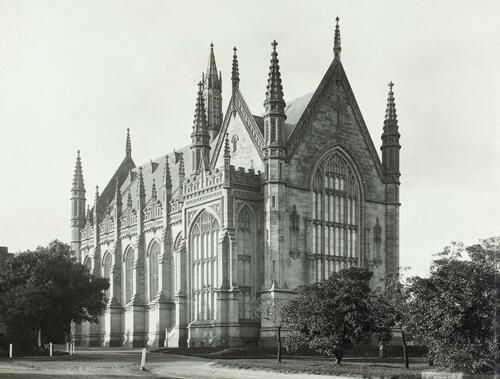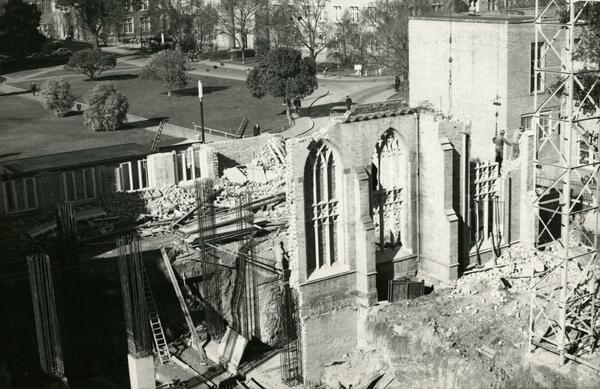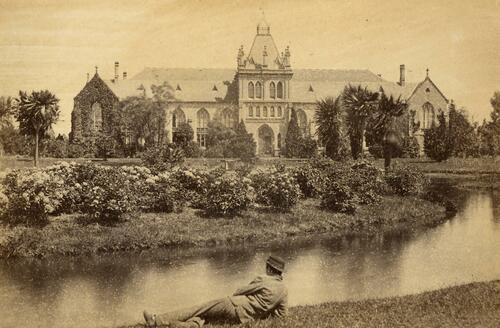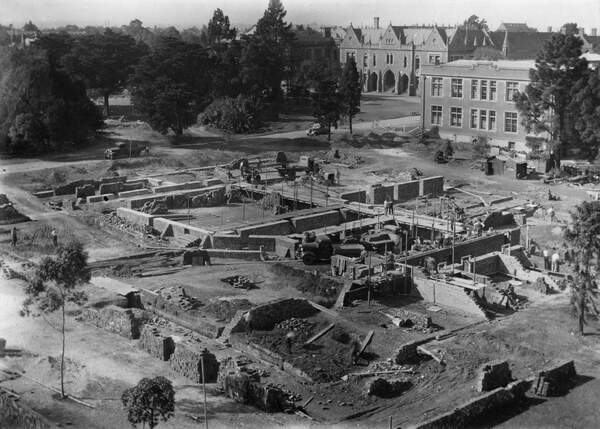Browse Exhibits (4 total)
Browse Architectural Styles

Established during the Victorian Era (1851 - 1900), the University's Parkville campus reflects the common architectural styles of the time. Funded by the British colonial government, the University's architecture was highly influenced by the architectural styles in London and Europe. Beginning with the Tudor Gothic of the Quadrangle then transitioning into Gothic Revival in the late 19th- and early 20th-centuries. The post World War One period saw the rise of American architectural influences, with the Collegiate Gothic style making its stamp on the architectural legacy of the campus. The mid-20th century witnessed the swift adoption of the Modernist movement in new buildings around campus.
Browse Materiality

The materials used to construct the buildings that make up the University have evolved since its inception. From Tasmanian sandstone to locally-made Melbourne bricks, the campus has adapted according to economic conditions and architectural trends over time. Even though it is considered to be one of the sandstone universities of Australia, the University of Melbourne has its fair share of brick buildings as well. This sections explores the common materials used in the campus and their origins.
Browse the significant architects

Since its establishment, numerous architects and designers have been involved in shaping the University into the campus we see today. This section showcases some of the significant architects who had a major influence on constructing the changes in the evolving campus. Each of these architects presented their life experience, the architectural style of the time and their vision of the University in the form of buildings that left a legacy for the coming generations.
Critical Moments of Change

The University was established in 1853, and over the intervening 170 years has grown. Starting with one campus, (the Carlton -now Parkville - site), the University has expanded to eight campuses spread across Melbourne and regional Victoria. As the oldest, the Parkville campus has undergone many changes. In its history there have been a number of critical moments of change, reflecting both the architectural transformation of the campus and the changes that influenced it. This section of the exhibition explores these critical moments.